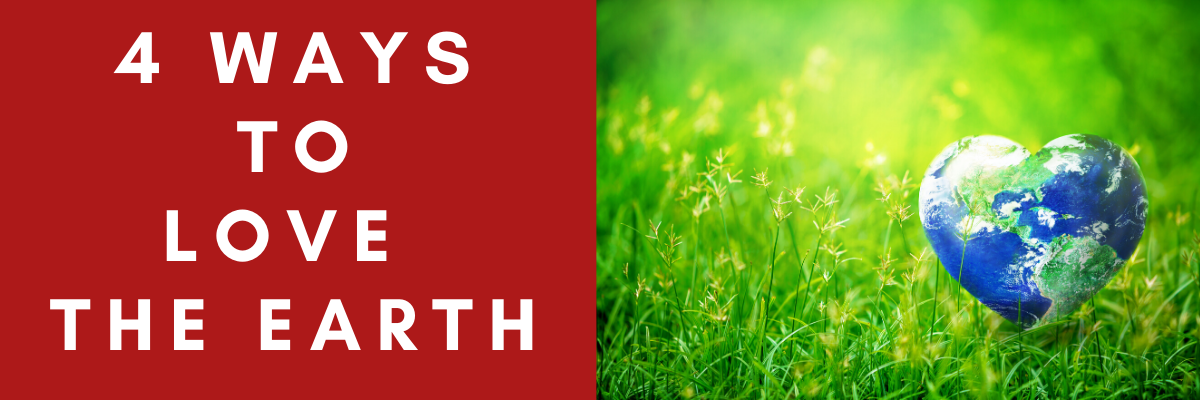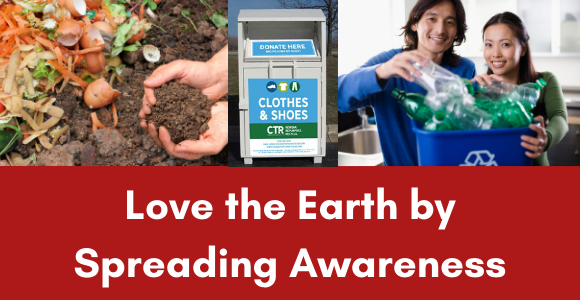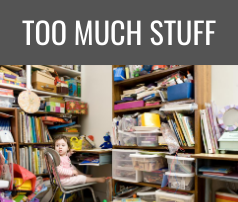 Green Benefits
Green Benefits
Too Much Stuff
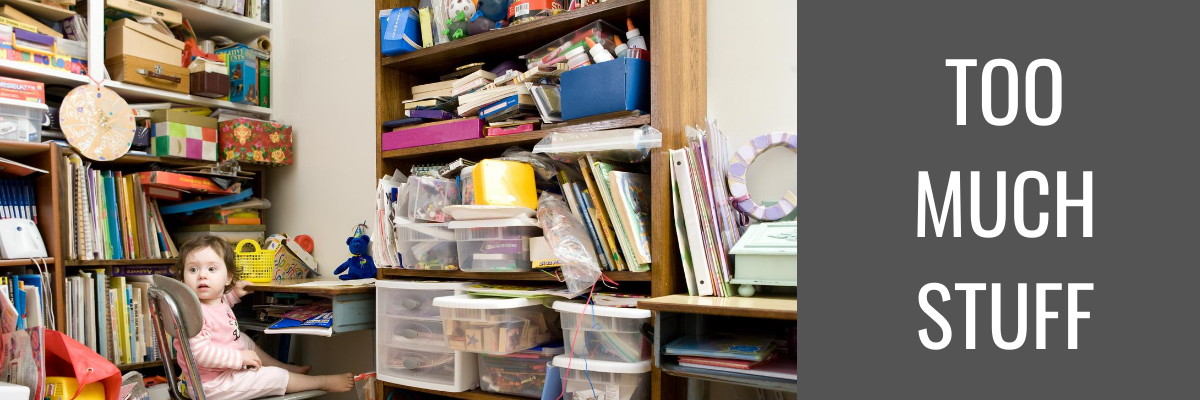
Chicago Textile Recycling works hard to “divert over 2.5 million pounds of waste from area landfills annually” and educate the public on the need for textile recycling in helping to care for our planet. Though we address primarily the recycling of textiles, overbuying and improperly disposing of possessions is a general problem across the board. We have become a culture consumed by materialism, having more, constantly wanting more, and with that comes a price paid by the health of our planet. It is a problem we need to take more seriously, and one that Adam Minter addresses in his newest book, “Secondhand: Travels in the New Global Garage Sale.”
For the sake of not creating a 700 page volume out of a blog post, I will mainly address the parts of his book where he discusses downsizing and cleaning out homes posthumously (after death).

Downsizing
In this time of tiny home popularity, downsizing is a regular occurrence. Not only is downsizing done voluntarily by those who are chasing after a simpler lifestyle, but it is also done by or for our aging population as they leave their lifelong homes to move into their (adult) child’s home or an assisted living facility.
Whatever reason one finds for downsizing, the question remains what to do with all of that stuff?
In his book, Minter educates his readers about cleanout companies that exist solely to help families downsize,
“The reasons for these cleanouts vary, but they typically revolve around downsizing and death. Business is booming: by 2030 senior citizens will account for one fifth of the U.S. population. Some of those seniors want to remain in their large single-family homes packed with stuff. But many others downsize, either by their own or someone else’s choice.” (“Secondhand,” p. 2)
The fact remains that many things a person owns has little to no resale value, with most of it accumulated for sentimental reasons. These sentimental reasons would likely not be relevant for others, and thus these items do not get resold. Additionally, Americans have grown over the last century in how much stuff that entails,
“The idea that a person may reach the end of life with more stuff than he or she can manage is new. For much of human history, senior citizens were among society’s most destitute and left little material evidence of themselves. That changed, like so much else, in the mid-twentieth century. Thanks to large houses (the average U.S. house has more than doubled in size since the 1950s), a robust social safety net, and longer lifespans, Americans have had the opportunity to acquire more stuff over a longer period of time than any nation in history.” (p. 8)
This newer problem of owning too much stuff has made an impact on the younger generation, who have created an entire movement realized from the dissatisfaction of owning too much. The simpler lifestyle movement was born, and with it, the tiny house movement, which challenges willing participants to downsize to bare necessities. Downsizing saves money and hopefully increases recreation time to pursue hobbies and things they love to do outside of work hours. Documentaries, books, and reality shows abound following this population in downsizing and chasing after what they find most important.
Through the writing of this book, it too affected Minter. Though his initial mission was to set out and find where his deceased mother’s belongings ended up, he ended up realizing too what “every consumer sort of knows. Sooner or later, we all know: it’s just stuff, and stuff isn’t forever.” (p. 272)

Posthumous Cleanouts
Another large problem presented by owning too much stuff is what happens to our belongings after we pass away. In short, this was the impetus Minter had in writing his second book, “Secondhand”:
“Two weeks after Junkyard Planet was published, my mother passed away unexpectedly. Like so many Americans with parents who accumulated stuff over a lifetime, my sister and I were left with an uneasy question: What do we do with her stuff? From a sentimental standpoint, it was hard to let go of anything for fear it meant something to her. From a practical perspective, neither of us had the space to keep much.” (“Secondhand,” p. xiv)
Though I am fortunate to still have two of my grandmothers alive (one in her 90s), I am entering the time of life when my peers and I are losing our parents. Recently my grandmother passed to us a paperweight she had given her husband, my Papa, many many years ago. She shared that he had eyed it longingly in a department store and she then went back later to buy it for him. He had loved receiving it she said and in passing it to my son, hoped it would be treasured once again. We all hope our most cherished belongings will be treasured by family after we are gone.
This hard issue of what to do with loved ones’ belongings after they pass away is a global one. In his book, Minter travels from North America to Asia and finds this problem everywhere. And everywhere he went, there were businesses that had been created to clean out homes of the deceased. As stated earlier, though, it is a new problem:
“Prior to World War II…the United States, like the rest of the world, was still an agrarian society, families were large and localized, and property of any kind was scarce, oftentimes homemade, and valuable. Nineteenth- and early twentieth-century practical housekeeping manuals (a genre that’s largely disappeared) were, in many respects, repair manuals. Some included basic cement recipes to aid in the repair of broken dishes. Others offered advice on basic strategies to prolong the usable lifespan of pottery, ironware, and glass. What little a parent or grandparent owned and left behind was bequeathed to the next generation for uninterrupted use. As the industrial revolution drew families into cities and mass-production jobs, society’s relationship to stuff began to change, and modern notions of ‘waste’ emerged.” (p. 16-17)
In the last 80 years the problem of waste and having “too much” materialized. This is likely due to the growing middle class and our ability to buy more things at cheaper cost and to the loss of sentimentality of owning handmade belongings, such as clothes and other items. As our world has become more fast-paced, we no longer have time to do all these things for ourselves, and so pay others to do them for us. The question then becomes how much is too much? And how can I change to better care for the earth and take more deliberate care of what I already own?
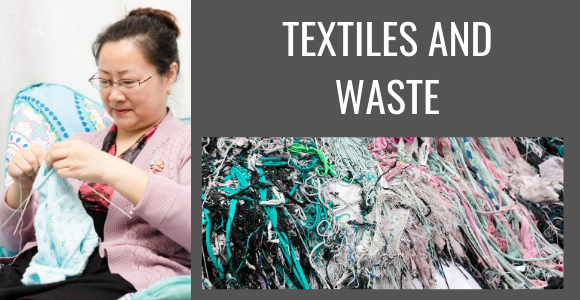
Textiles and Waste
At Chicago Textile Recycling, we aim to promote the recycling of textiles and inform you, our reader, on how to properly dispose of textiles in a way that is environmentally-friendly. This problem of too much stuff is one that pertains also to textiles.
“Likewise, before mass production rendered clothing cheap and large wardrobes a middle-class entitlement, garments were homemade and expensive. A shirt would require days of labor; bed linens and blankets were heirlooms. When they wore out or tore, they were mended, reused in other garments, or–ultimately–reduced to rags for cleaning.
Industrialization and urbanization changed everything. Busy days spent in a sweatshop provided little time to mend a shirt, repurpose it into a new garment, or reduce it to rags. As a result, store-bought alternatives emerged, and families used the money earned from hourly or daily wages to buy them. They were still expensive – it would be decades before middle-class Americans could afford multiple changes of store-bought clothes. But the idea that a garment or other object was a resource that should be renewed at home was eroding. In the process, the sentimental value associated with clothing declined as quickly as the material value. After all, it’s easier to discard a store-bought shirt than one made at home by a mother, a wife, or a sister.” (p. 17)
Fast fashion and our fast-paced lifestyle have led us away from having a sentimental relationship to our belongings. Now it is others who cut our old shirts down to rags.
However, I am hopeful that this new generation of youtube video makers, etsy store creators and young hipsters wanting to return to a slower pace and a simpler lifestyle will help others treasure those things we once held dear, and to return to a more handmade, environmentally-friendly way of life.

So What Now?
Over the course of the book, Minter travels all over the globe, learning a great deal of information about the life of our belongings such as textiles and electronics and how they make their way across continents. He follows those who clean out homes in the midwest of the U.S. and those who clean out homes in Japan and finds that owning too much stuff is a universal problem. It is not a problem that every person has, but many do. Talking to those who work in the field of cleaning out homes, it is clear these workers are affected in positive ways. From affecting their own consumption of material goods to bringing awareness to the brevity of life, it inspires change.
How will this inspire you? Will you buy less knowing someone else will have the task of foraging through your belongings after you pass on? Will you buy more thoughtfully with the environment in mind or how well the item is made knowing it will last to be passed on to the next generation? Or will you begin to declutter, creating your own business as Minter’s wife did during the writing of his book, or simply making better use of what you have and clearing out your space for a simpler lifestyle? The choice is yours.
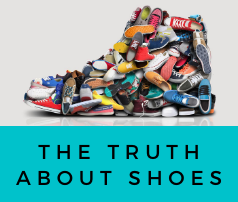
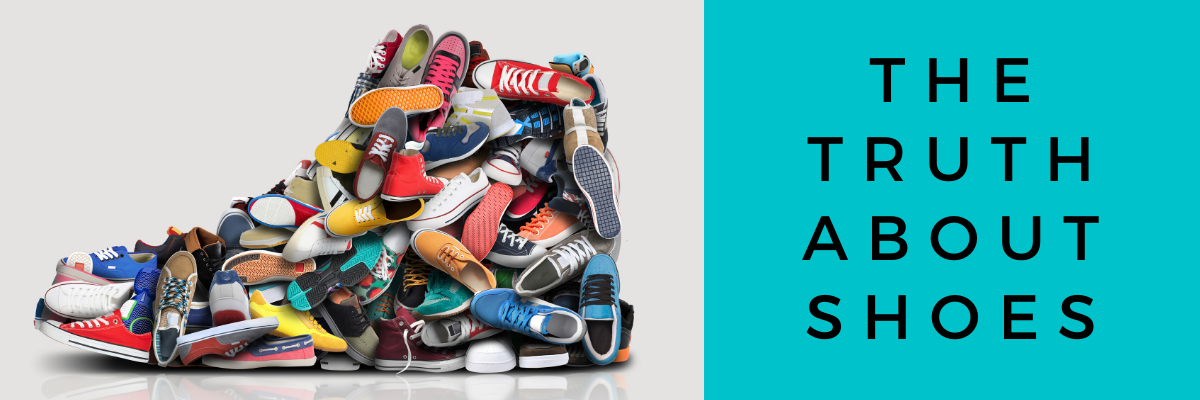


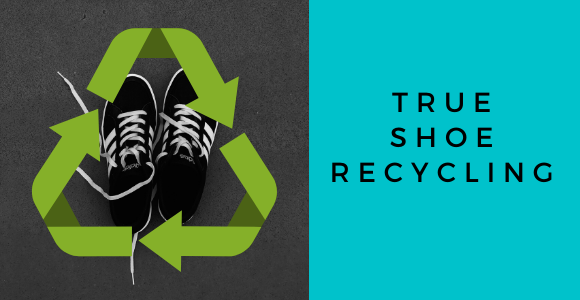
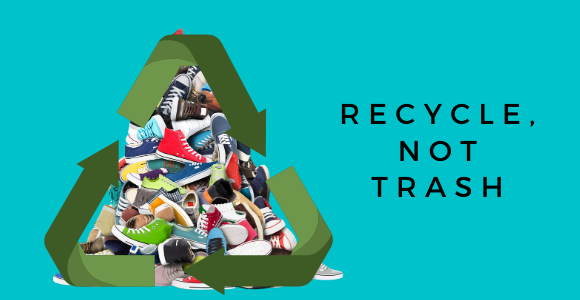
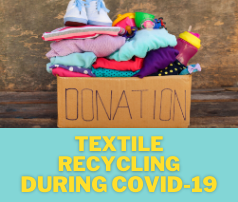
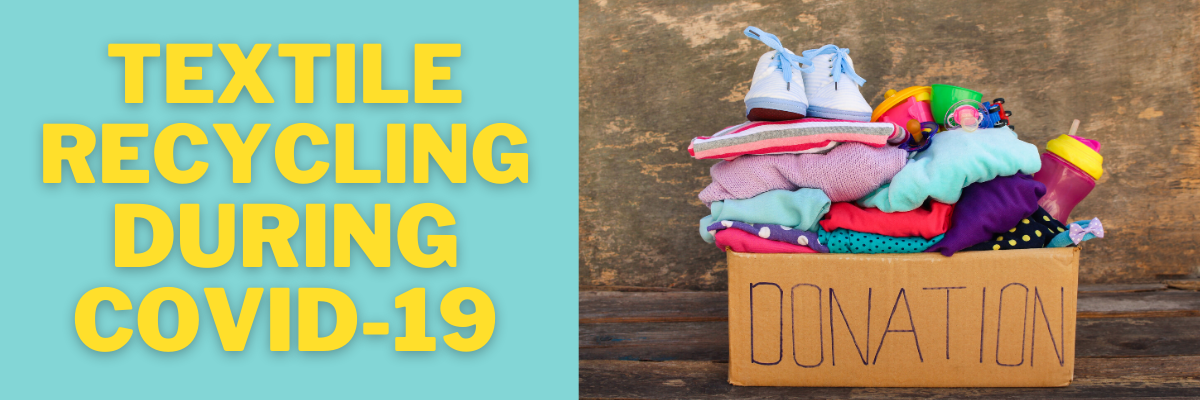


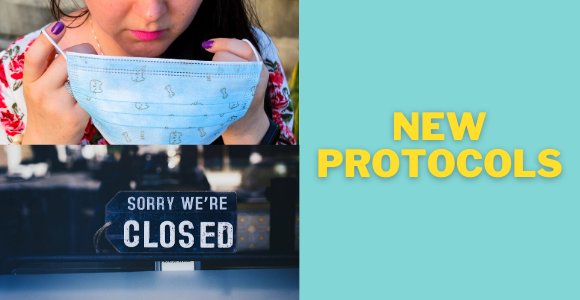
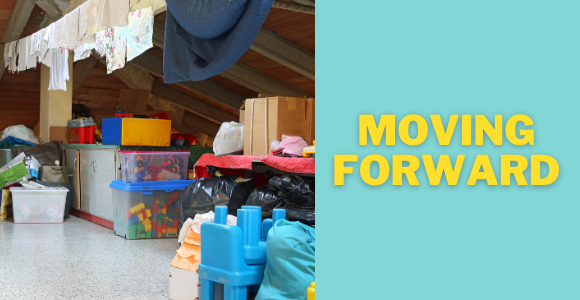
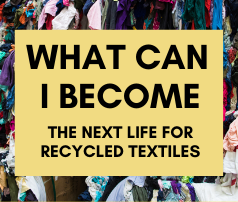
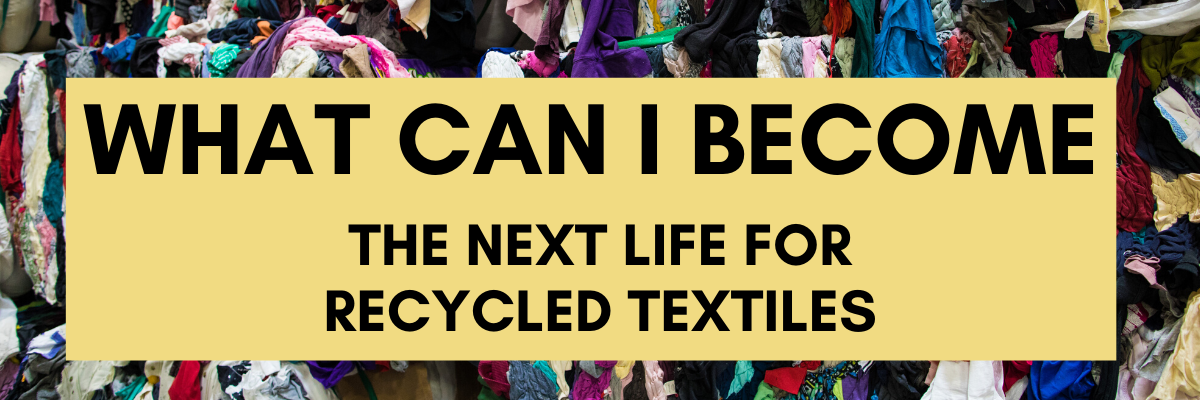

 T-shirts, sheets, towels and clothing can become wiping rags. T-shirts and clothing in good or great condition are typically resold in stores or sent to other countries to provide clothing for the population there, but for t-shirts and clothing that is not salvageable for reuse, and for towels and sheets, many times it is recycled into wiping rags.
T-shirts, sheets, towels and clothing can become wiping rags. T-shirts and clothing in good or great condition are typically resold in stores or sent to other countries to provide clothing for the population there, but for t-shirts and clothing that is not salvageable for reuse, and for towels and sheets, many times it is recycled into wiping rags.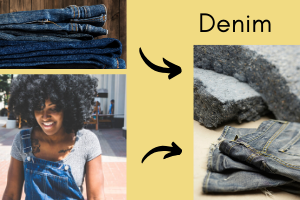 Denim can become home insulation. For denim jeans, skirts, overalls and other products that are in good condition, they can be resold and reused. However for denim that is not in the best shape or stained or torn too much, it can be shredded and used as home insulation. This is a great way to keep denim out of landfills and give it another life in a different form that is beneficial for textile recycling and keeping your home warm.
Denim can become home insulation. For denim jeans, skirts, overalls and other products that are in good condition, they can be resold and reused. However for denim that is not in the best shape or stained or torn too much, it can be shredded and used as home insulation. This is a great way to keep denim out of landfills and give it another life in a different form that is beneficial for textile recycling and keeping your home warm.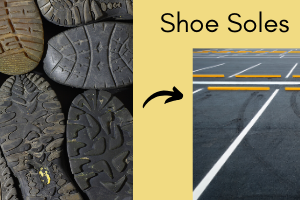 Shoe soles can become paving material. When shoe soles contain fine rubber powder, they can be recycled as rubber granulate that then combines with a binder and goes into creating roads, running tracks, playground surfacing, railroad pads and more. Shoes are high in demand as a reuse and resale product, but for those that don’t make the cut, they can be used for paving material.
Shoe soles can become paving material. When shoe soles contain fine rubber powder, they can be recycled as rubber granulate that then combines with a binder and goes into creating roads, running tracks, playground surfacing, railroad pads and more. Shoes are high in demand as a reuse and resale product, but for those that don’t make the cut, they can be used for paving material. Sweaters and coats can become carpet padding. Similar to denim that is broken down and made into insulation, sweaters and coats that are no longer reusable can be downcycled into carpet padding. One of the three methods of recycling textiles we discuss on our website is breaking the textiles down into fiber content. This would be the case for making carpet padding from sweaters and coats. Carpet padding is another great way to keep textiles out of landfills and give them a new purpose and life.
Sweaters and coats can become carpet padding. Similar to denim that is broken down and made into insulation, sweaters and coats that are no longer reusable can be downcycled into carpet padding. One of the three methods of recycling textiles we discuss on our website is breaking the textiles down into fiber content. This would be the case for making carpet padding from sweaters and coats. Carpet padding is another great way to keep textiles out of landfills and give them a new purpose and life. Curtains and drapes can become stuffing for pillows, sleeping bags and animal beds. In the same way as products mentioned previously, curtains and drapes can be recycled into fiber content used to stuff those three products. For curtains and drapes in good condition, they can be cleaned and resold. But for those too stained and/or torn to be reused, they may end up as filling for new products that need a little fluff.
Curtains and drapes can become stuffing for pillows, sleeping bags and animal beds. In the same way as products mentioned previously, curtains and drapes can be recycled into fiber content used to stuff those three products. For curtains and drapes in good condition, they can be cleaned and resold. But for those too stained and/or torn to be reused, they may end up as filling for new products that need a little fluff.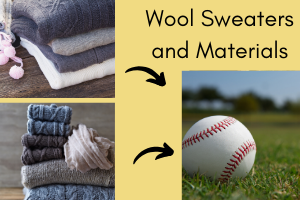 Wool sweaters and materials can become baseball and softball filling. Ever wonder what baseballs and softballs have on the inside giving them the density and weight to be used for sport? At the core is rubber or cork, which is then wrapped in wool and poly/cotton windings, with a cowhide exterior. For those wool sweaters and materials that are falling apart, donate them even if you don’t think they would be considered for reuse. They can become filling for America’s favorite sport.
Wool sweaters and materials can become baseball and softball filling. Ever wonder what baseballs and softballs have on the inside giving them the density and weight to be used for sport? At the core is rubber or cork, which is then wrapped in wool and poly/cotton windings, with a cowhide exterior. For those wool sweaters and materials that are falling apart, donate them even if you don’t think they would be considered for reuse. They can become filling for America’s favorite sport. Velvet materials can become jewelry box lining. Though velvet isn’t as popular a textile as it once was, you can still find it being used in various forms such as curtains, pants, furniture and blazers here and there. When no longer in need of your favorite velvety smooth textile, please donate it. If the item is not suitable for reuse, it can become box lining for your next jewelry purchase.
Velvet materials can become jewelry box lining. Though velvet isn’t as popular a textile as it once was, you can still find it being used in various forms such as curtains, pants, furniture and blazers here and there. When no longer in need of your favorite velvety smooth textile, please donate it. If the item is not suitable for reuse, it can become box lining for your next jewelry purchase.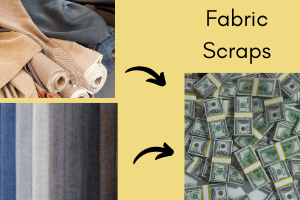 Leftover fabric scraps can become paper money. As explained in this
Leftover fabric scraps can become paper money. As explained in this 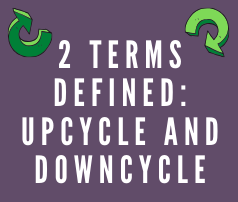

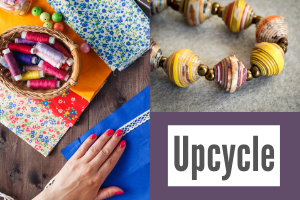 Merriam-Webster online
Merriam-Webster online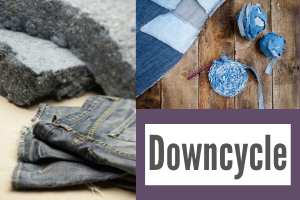 In comparison to upcycle,
In comparison to upcycle, 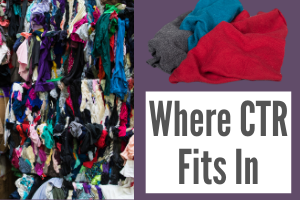 Chicago Textile Recycling, as a part of its parent company
Chicago Textile Recycling, as a part of its parent company 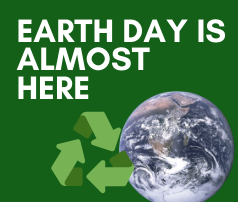
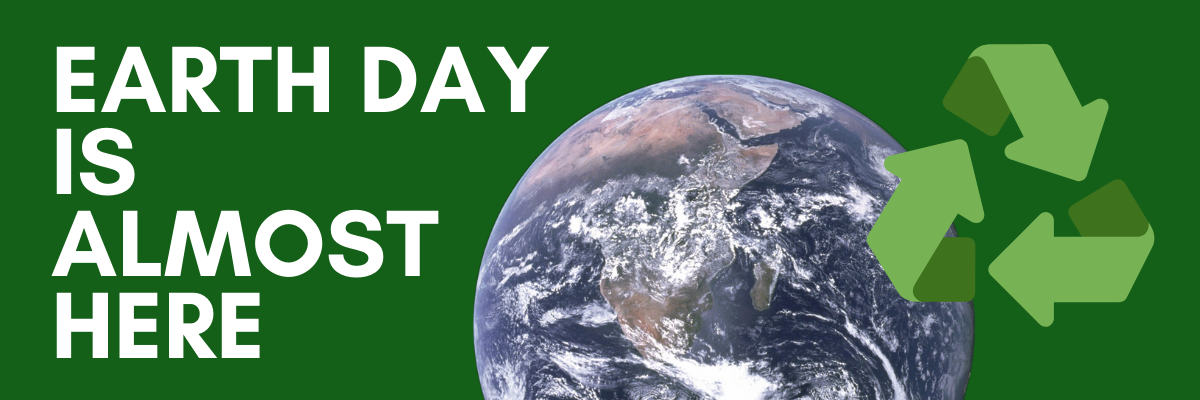

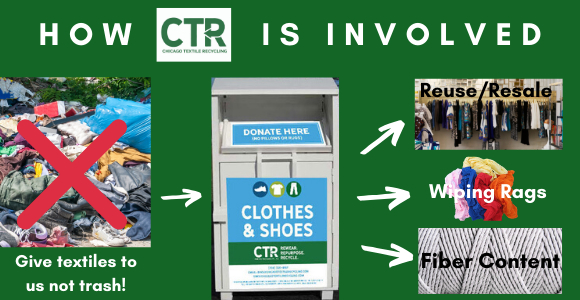


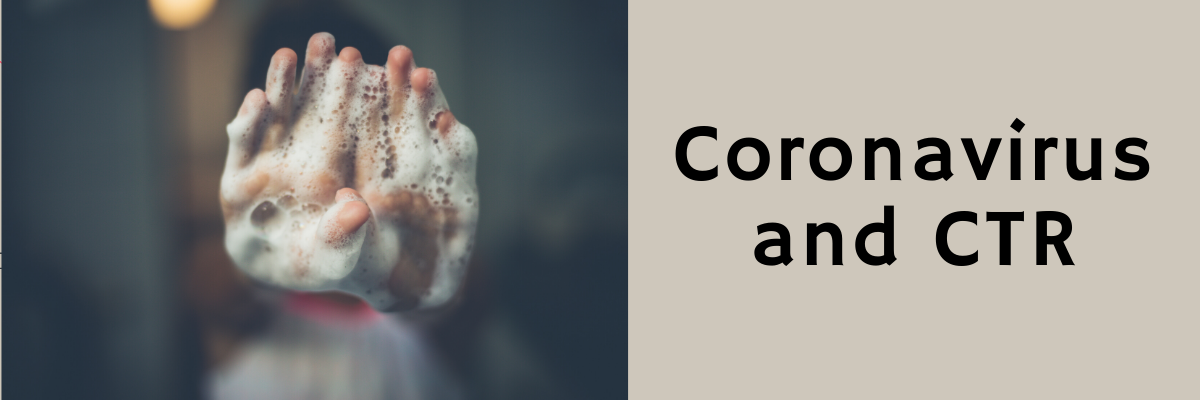
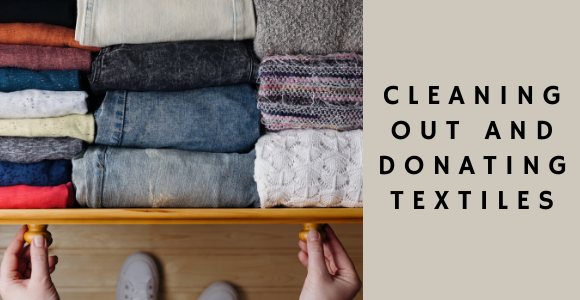
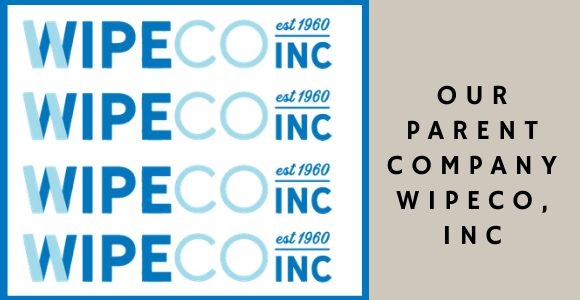



 Amongst those who took the survey, the room most likely to get deep cleaned was the bathroom: “46% reported that the bathroom was the room they most likely chose to ‘deep clean’.” As you clean the bathroom this Spring, remember to declutter as well. Check the drawers and closets in your bathroom to assess which towels and washcloths no longer get used or absorb as they should. Check also your beach towel stash for the summer ahead and recycle any beach towels that you no longer need or use. Lastly, If you are looking to give your bathroom an inexpensive makeover, also remember to recycle your cloth shower curtain. For information about recycling bins and partner stores nearest to you, please
Amongst those who took the survey, the room most likely to get deep cleaned was the bathroom: “46% reported that the bathroom was the room they most likely chose to ‘deep clean’.” As you clean the bathroom this Spring, remember to declutter as well. Check the drawers and closets in your bathroom to assess which towels and washcloths no longer get used or absorb as they should. Check also your beach towel stash for the summer ahead and recycle any beach towels that you no longer need or use. Lastly, If you are looking to give your bathroom an inexpensive makeover, also remember to recycle your cloth shower curtain. For information about recycling bins and partner stores nearest to you, please  The second most likely room to be deep cleaned (with 36%) according to the survey was the kitchen. This is usually comprised of pulling ovens and refrigerators out to sweep underneath or behind, deep cleaning the oven and fridge, sinks and stovetops, and mopping or scrubbing floors. As you complete these tedious but necessary tasks, look around at the textiles in this room also and see what needs to be recycled. Kitchen towels, non-vinyl tablecloths, table runners, cloth placemats and oven mitts at times will need an overhaul, and when they do, remember to recycle these items and do not throw them away.
The second most likely room to be deep cleaned (with 36%) according to the survey was the kitchen. This is usually comprised of pulling ovens and refrigerators out to sweep underneath or behind, deep cleaning the oven and fridge, sinks and stovetops, and mopping or scrubbing floors. As you complete these tedious but necessary tasks, look around at the textiles in this room also and see what needs to be recycled. Kitchen towels, non-vinyl tablecloths, table runners, cloth placemats and oven mitts at times will need an overhaul, and when they do, remember to recycle these items and do not throw them away. The next room most likely (10%) to be deep cleaned this spring is the living room. Although we do not accept pillows or rugs, we do accept pillow covers, sofa covers, drapes or curtains, and blankets that you may find in your living room. Even if it is tattered, stained or contains holes, please donate it so that we can best decide how to give it another life elsewhere. For where to donate your rugs, carpets or pillows, check out our previous blog about
The next room most likely (10%) to be deep cleaned this spring is the living room. Although we do not accept pillows or rugs, we do accept pillow covers, sofa covers, drapes or curtains, and blankets that you may find in your living room. Even if it is tattered, stained or contains holes, please donate it so that we can best decide how to give it another life elsewhere. For where to donate your rugs, carpets or pillows, check out our previous blog about  From those surveyed, seven percent answered they deep cleaned bedrooms as well during spring cleaning. Bedrooms are where the majority of textiles can be found in your home as bedding and clothes constitute the majority of what we own in textiles. As you move your bed aside to vacuum underneath and dust dressers and bookshelves, take the time to declutter as well in your spring cleaning and clean out your closets, dressers and excess bedding. No matter how you go about the process, it will feel good to go through and assess what you already own, what you may need, what no longer fits or is no longer in good shape to wear and recycle those items you’ve realized are not getting worn.
From those surveyed, seven percent answered they deep cleaned bedrooms as well during spring cleaning. Bedrooms are where the majority of textiles can be found in your home as bedding and clothes constitute the majority of what we own in textiles. As you move your bed aside to vacuum underneath and dust dressers and bookshelves, take the time to declutter as well in your spring cleaning and clean out your closets, dressers and excess bedding. No matter how you go about the process, it will feel good to go through and assess what you already own, what you may need, what no longer fits or is no longer in good shape to wear and recycle those items you’ve realized are not getting worn. One area of your home not mentioned by those who took the survey but equally important in cleaning out this season are your closets, such as linen closets, hall closets, and front closets. At Chicago Textile Recycling, we accept sheets, bedspreads, jackets, coats, scarves, hats, mittens, and quilts in addition to those items mentioned above such as handbags and backpacks. All of these items may be ones only found in extra closets around the house, so be sure to clean these out as well before making a trip to the donation bin or resale store.
One area of your home not mentioned by those who took the survey but equally important in cleaning out this season are your closets, such as linen closets, hall closets, and front closets. At Chicago Textile Recycling, we accept sheets, bedspreads, jackets, coats, scarves, hats, mittens, and quilts in addition to those items mentioned above such as handbags and backpacks. All of these items may be ones only found in extra closets around the house, so be sure to clean these out as well before making a trip to the donation bin or resale store. 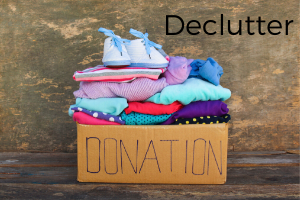 Twenty-two percent of survey respondents cited decluttering as their primary reason for spring cleaning each year. If you are a part of that 22%, or even if you aren’t, try decluttering as a part of your spring cleaning this year and see if living with less reduces anxiety and makes you feel better in the space where you live. “Women’s stress levels are directly proportional to the amount of stuff in their homes.” I have found this to be true in my home. I feel more relaxed when there are less piles on each tabletop and when things are put away in their proper place. According to the National Soap and Detergent Association, “getting rid of clutter eliminates 40% of housework in the average home.” Who wouldn’t want less housework?!
Twenty-two percent of survey respondents cited decluttering as their primary reason for spring cleaning each year. If you are a part of that 22%, or even if you aren’t, try decluttering as a part of your spring cleaning this year and see if living with less reduces anxiety and makes you feel better in the space where you live. “Women’s stress levels are directly proportional to the amount of stuff in their homes.” I have found this to be true in my home. I feel more relaxed when there are less piles on each tabletop and when things are put away in their proper place. According to the National Soap and Detergent Association, “getting rid of clutter eliminates 40% of housework in the average home.” Who wouldn’t want less housework?!
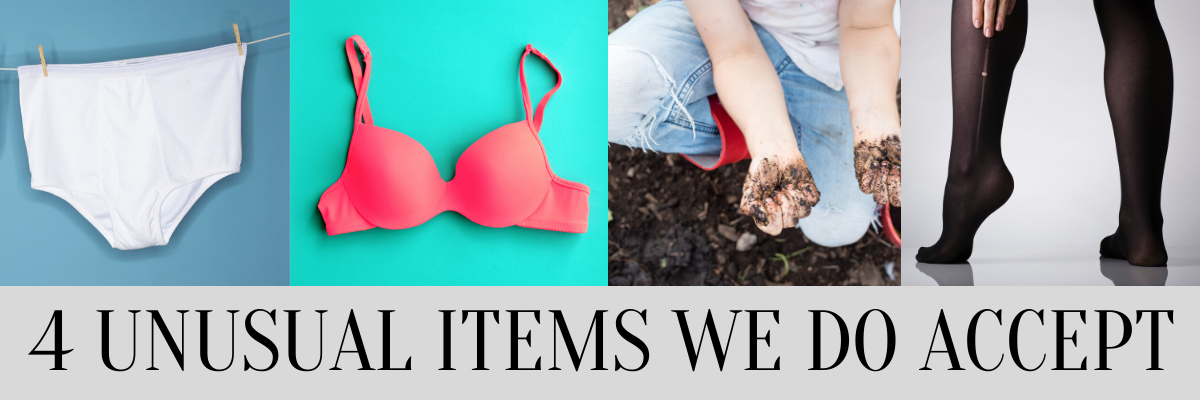
 Most people assume that once underwear is worn and no longer wearable due to holes and broken elastic, it is trash. Either the person is embarrassed about having someone else see their used undies, or it just doesn’t cross their mind that this would be a product that recycling facilities may want. However, to clarify the confusion, CTR does accept used panties and underwear as long as they are clean, dry, and odor-free, and they actually are in high demand due to people being so reticent about donating them. When it comes to keeping textiles out of landfills, we want to recycle as much as possible…into reusable clothing if possible, into wiping rags, or into basic fiber content. So send us your undies!
Most people assume that once underwear is worn and no longer wearable due to holes and broken elastic, it is trash. Either the person is embarrassed about having someone else see their used undies, or it just doesn’t cross their mind that this would be a product that recycling facilities may want. However, to clarify the confusion, CTR does accept used panties and underwear as long as they are clean, dry, and odor-free, and they actually are in high demand due to people being so reticent about donating them. When it comes to keeping textiles out of landfills, we want to recycle as much as possible…into reusable clothing if possible, into wiping rags, or into basic fiber content. So send us your undies! Another item most people assume may not be an acceptable donation are bras, but there in fact exists a high demand for used bras. Brand new bras are very expensive, and so those that are used but still in workable condition should definitely be donated to your nearest bin. Resale store shoppers and even those receiving bulk donations in third world countries appreciate and need affordable bras. Even bras you may no longer consider wearable due to pilling or small holes or loosened elastic can be worn by others in need. If your bra is broken, recycle it anyway and allow CTR or the resale store be the final judge on how we can use it.
Another item most people assume may not be an acceptable donation are bras, but there in fact exists a high demand for used bras. Brand new bras are very expensive, and so those that are used but still in workable condition should definitely be donated to your nearest bin. Resale store shoppers and even those receiving bulk donations in third world countries appreciate and need affordable bras. Even bras you may no longer consider wearable due to pilling or small holes or loosened elastic can be worn by others in need. If your bra is broken, recycle it anyway and allow CTR or the resale store be the final judge on how we can use it. One item you may think twice about donating is children’s clothing that has stains or holes in the knees. Again, children’s clothing is in high demand and we definitely do accept clothes with both of those imperfections. As long as the clothing is clean, dry, and free of odor, we accept it and use it in any reused or recycled form we can. When in doubt, recycle. Allow the experts in textile recycling make the final call in knowing if a textile is in fact as its end of life. Be satisfied in knowing that you have done your part in helping others and keeping textiles out of landfills.
One item you may think twice about donating is children’s clothing that has stains or holes in the knees. Again, children’s clothing is in high demand and we definitely do accept clothes with both of those imperfections. As long as the clothing is clean, dry, and free of odor, we accept it and use it in any reused or recycled form we can. When in doubt, recycle. Allow the experts in textile recycling make the final call in knowing if a textile is in fact as its end of life. Be satisfied in knowing that you have done your part in helping others and keeping textiles out of landfills. Lastly, pantyhose is an item that we do accept, but may fall into a slightly different category due to lack of demand. You are welcome to donate your used pantyhose/stockings/tights to us, or another option could also be found on
Lastly, pantyhose is an item that we do accept, but may fall into a slightly different category due to lack of demand. You are welcome to donate your used pantyhose/stockings/tights to us, or another option could also be found on 
